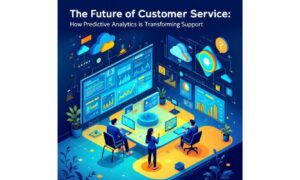In the fast-paced retail sector, predictive analytics is transforming strategies with precise demand forecasting, personalized customer engagement, and enhanced operational efficiency. Ravi Teja Gurram, an expert in predictive analytics, highlights the value of integrating advanced ETL workflows with data visualization to unlock actionable insights. By processing large datasets accurately and visualizing trends intuitively, businesses can adapt to market changes, optimize inventory, and elevate customer experiences. This synergy fosters data-driven strategies, boosting profitability and ensuring a competitive edge in retail.
The Core of Predictive Modeling
Predictive modeling lies at the heart of data-driven retail transformation. By leveraging historical sales data, customer demographics, and seasonal trends, retailers can identify key predictive variables that influence future outcomes. Historical transaction records reveal purchasing patterns, while demographic insights like age, location, and income allow for precise customer segmentation. Seasonality—shaped by holidays and external events—further enhances the accuracy of predictions.
To achieve this, advanced modeling techniques such as regression analysis, machine learning algorithms, and time-series forecasting are employed. These tools enable retailers to analyze patterns, optimize inventory, and prepare for demand fluctuations. The development of features like rolling averages and lagged variables ensures that predictive models capture both immediate and delayed effects, creating a comprehensive approach to forecasting.
Visualizing Insights for Better Decisions
Data visualization is a vital component of predictive analytics, turning complex datasets into actionable insights. Effective visualizations, such as line graphs, heatmaps, and scatter plots, allow decision-makers to identify trends, deviations, and opportunities with ease. For example, sales forecasts presented as dynamic charts can reveal future revenue trends, while churn probabilities visualized as heatmaps highlight at-risk customer segments.
Beyond trend analysis, visual tools help compare historical data against predictions, ensuring models remain accurate and relevant. Deviation detection through control charts or error bands alerts stakeholders to anomalies, enabling timely corrective actions. These visual techniques not only enhance understanding but also build trust in the predictive models by transparently showcasing their reliability.
Driving Action Through Insights
The ultimate goal of predictive analytics in retail is actionable decision-making. Recommendation systems, a prominent application, analyze customer behavior to offer personalized product suggestions. These systems integrate historical and predictive data, allowing businesses to identify cross-sell and upsell opportunities effectively.
Demand forecasting further illustrates the utility of predictive analytics. By accounting for factors like sales history, promotions, and seasonality, retailers can optimize inventory management, reducing stockouts and overstocking. This proactive approach streamlines procurement and distribution processes, improving operational efficiency and customer satisfaction.
Navigating Challenges in Predictive Analytics
Despite its potential, implementing predictive analytics in retail presents challenges. Ensuring data quality and consistency across sources is paramount. Retailers must invest in robust data cleansing and validation mechanisms to maintain the integrity of their datasets. Additionally, model interpretability remains a key concern. Techniques like feature importance analysis and model-agnostic explanations can bridge the gap between technical outputs and stakeholder comprehension.
Ethical considerations also play a critical role. Transparency in data usage and adherence to privacy regulations are essential for maintaining customer trust. Mitigating biases in predictive models ensures fair and equitable outcomes, aligning analytics practices with ethical standards.
Sustaining Predictive Success
In an ever-evolving marketplace, retailers must prioritize the continuous monitoring and refinement of predictive models to stay competitive. As customer behaviors and market dynamics shift, adaptive models that incorporate new data and trends become essential. Implementing robust feedback loops for performance evaluation and timely retraining ensures these models maintain accuracy, relevance, and effectiveness. This proactive approach enables businesses to remain agile, enhance decision-making, and respond effectively to changing demands, fostering sustained growth and resilience in a highly dynamic and competitive retail landscape.
In conclusion, Integrating ETL and visualization techniques into predictive analytics offers retailers transformative opportunities to drive growth and foster innovation. Ravi Teja Gurram’s contributions highlight the strategic role of data in forecasting demand, personalizing customer experiences, and streamlining operations. As the retail landscape evolves amidst dynamic market shifts, predictive analytics stands out as an essential tool for enhancing agility and ensuring data-driven decisions. By embracing these advanced analytics capabilities, retailers can achieve sustainable success, stay ahead of competitors, and effectively address the ever-changing needs of their customers.



































